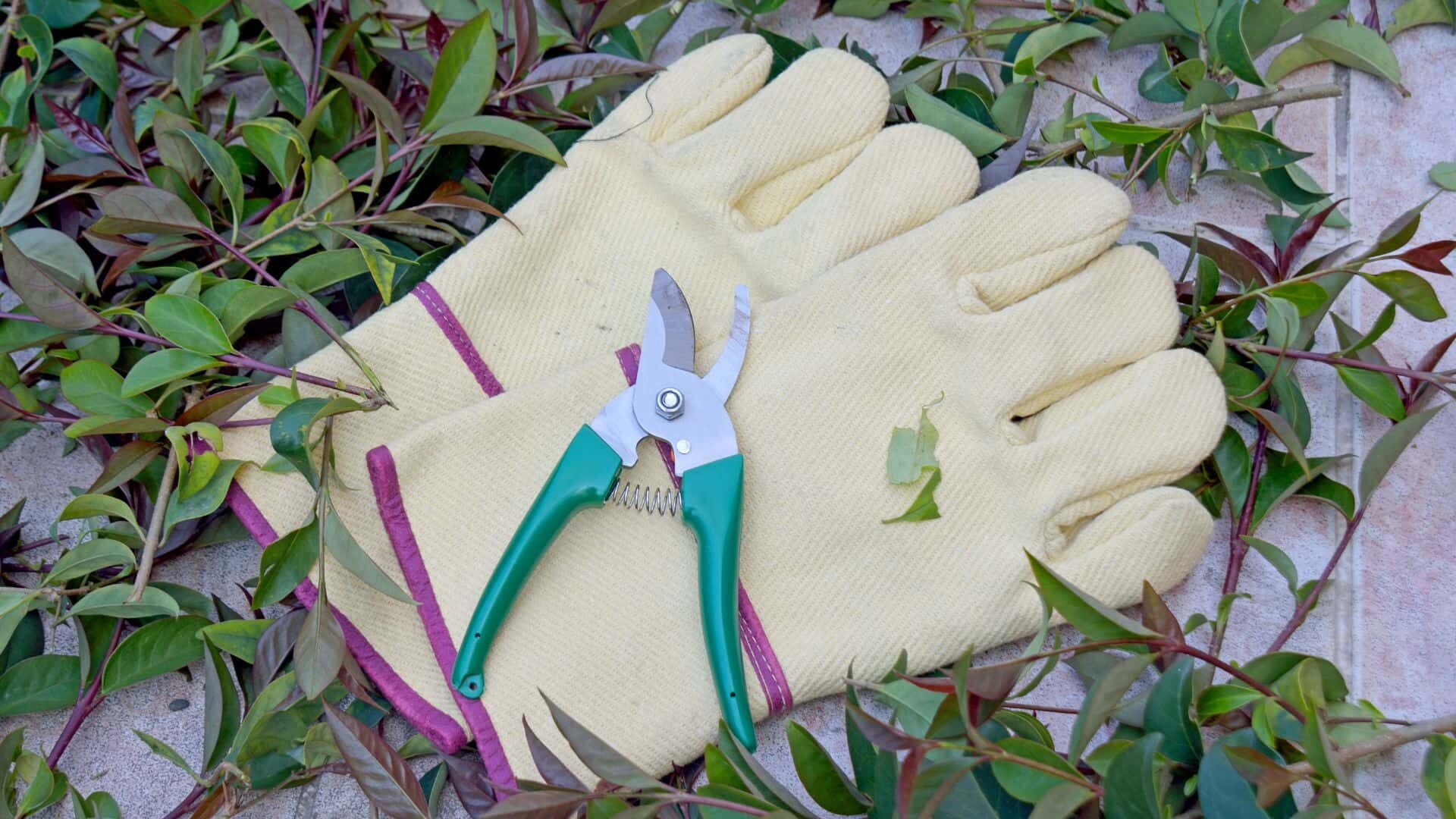Most gardeners favor growing Sweet William because it adds visual appeal to their gardens. In addition, some gardeners struggle with the task of pruning. Sweet William, often known as Dianthus barbatus and referred to as bunch pink or bearded pink, is a member of the Caryophyllaceae family grown for its tiny clusters of multicolored blooms. Herbaceous, short-lived perennial or biennial flowering plant, great for borders, beds, or pots.
Pollinators like bees, hummingbirds, and butterflies are attracted to the colorful blossoms. The plant can reach a height of 60cm (two feet) and produces many flowers with fringed petals. These flowers can be white, pink, rose violet, or sometimes even both colors. Pruning is more important to keep your plant healthy.
Do you know how to prune Sweet William?. Pruning is essential to garden maintenance that helps keep plants healthy and attractive. While pruning plants can be a strenuous physical activity, the most important aspects of this skill are mental preparation and planning.
Pruning removes specific plant elements (branches, buds, spent flowers, etc.) for aesthetic or practical gardening and landscaping. By reading this guide, you will be able to know, How and When to Prune Sweet William for Maximum Blooms?.

Let’s start,
Why should you prune Sweet William?
You should know why and what you want to accomplish before beginning the pruning process is far more crucial. Pruning can do for various purposes, including but not limited to encouraging new growth. Pruning can do for numerous purposes, one of which is promoting healthy growth in plants.
1. Improve better growth and blooming.
Flowers on Sweet William can keep blooming for longer by pruning the plant. It helps the plant conserve water and nutrients for later blooms. When flowers begin to wilt, it’s time to do this. After flowering, most plant types benefit from a thorough trimming. The result is new growth and maybe even a second bloom later in the season.
2. Ensure the longevity of Sweet William.
Plants can live much longer with regular pruning. Incorrect or infrequent pruning can shorten the life span of a plant, whereas regular trimming might increase it.
3. Reduce pests and insect attacks.
Pruning Sweet William plants is an essential step in improving pest control. The Sweet William plant is susceptible to damage from numerous insect pests. Numerous species of these creatures feed on plant leaves, while others drink the sap.
Plants suffer damage from feeding problems because they become susceptible to disease. It’s possible to keep Sweet Willliam under control with regular pruning.
4. Improve the plant quality.
Maintaining a healthy sweet William plant requires regular pruning. A plant’s withering or dead stem might provide an accessible site for pests and insects. Diseases can spread throughout the plant if they are allowed to enter.
5. Improve the plant’s aesthetic appeal.
More resources can allocate to robust blooms’ growth thanks to regular pruning. Appropriately timed pruning can increase the number of flowering shoots from a given plant. Newer stems have more vibrant hues. As a result of being pruned, these tender shoots flourish and spread.
What tools do you need to prune Sweet William?
When it comes time to prune your Sweet William plants, you won’t need much equipment. There are the only implements required such as,
1. Gloves
Pests, fungi, and insects are just some things you could see in the garden. Many bacteria and fungi are harmless, but a few are pretty dangerous. Therefore we must be on guard with gardening gloves and other protective clothing.
2. Small Pruning Shears
Pruning a Sweet William plant is simple and requires only pruning shears, not too large.
3. Household Disinfectant
It is essential to clean the pruning shears with a household disinfectant before using them.
When to prune Sweet William?
During the early summer, after the initial blooms have faded, Sweet William can prune to promote the second round of flowers.
Most types of Sweet William bloom the second year after planting the seeds. Even if you don’t get all your seeds or transplants in before the frost, you might get a few flowers. Some types are annuals, too. It’s unlikely that your plants would revive on their own, but if they self-sow, you might have another harvest.
How to prune Sweet William?
If you want to keep your Sweet William plant at its best, it just needs a little pruning effort.
1. Clean Pruning shears with disinfectant.
To reduce the likelihood of transmitting illnesses from plant to plant, sanitize your pruning shears, secateurs, and other cutting tools by soaking them in household disinfectant.
What can you use to clean pruning shears as disinfectants?
You can soak selected pruning shears or other cutting tools in one of the following solutions for at least five minutes before beginning your pruning or deadheading.
- Full strength Lysol
- A solution of 70% rubbing alcohol in water
- Pine-Sol diluted with water (1:3)
Before using, give your instruments a quick rinse in clean water or let them air dry.
2. Cut the stem to the base of the plant.
If the entire plant is still flowering, but one stem’s flowers are withering or drying up, cut that stem back to the base of the plant using pruning shears. New growth may emerge after you prune the shrubs if it’s still early in the season.
After the flowers have faded, cut the entire plant down by one-half to one-third of its height to prevent the Sweet William from producing new seeds, there are instances in which the plant will come back again with blossoms in the following year.
If you want your Sweet William to keep blooming beyond summer’s end, leave some of the spent flower heads on the plants. Seeds from the spent heads will fall to the ground and germinate the following year.

3. Deadhead Sweet William
Deadheading is a great way to revitalize your garden and keep it free of dark, wilted blooms. Inspect the plants periodically for spent flowers after they begin to bloom.
When sweet William flower heads begin to wilt and die, trim their stems back about half their length with bypass pruners or pinch them off with your fingertips.
If you’d rather not deadhead individual flowers, once most of them have faded, you can reduce the size of the entire plant by cutting it in half using grass shears. A plant like a sweet william that blooms profusely will need regular deadheading, carefully removing each spent flower. When you shear, you may manage the size of overgrown plants, remove spent blossoms from them at once, and stimulate new blooms.
After each flowering cycle, cut them back to half their original height when the flowers have faded and begun to die. If you want the flowers to self-seed and spread to other parts of the garden next year, you should skip this stage for a blooming cycle in late summer. When you let a plant grow to seed, its blooms eventually wither and fall off.
If you do not want the entire plant to produce seeds, you can trim off all but a few flower heads and leave only a few seed pods on the plant. It allows the plant to reseed itself so it will return the following year, but it limits the number of seeds it produces so that it won’t take over the garden.
6 Basic caring tips for Sweet William to get more blooms
Sweet William can grow with little effort in filtered sunlight and nutrient-rich, well-drained soil. Under ideal conditions, the plants will need effortlessly self-seed every year so that you can count on a new crop of gorgeous blooms every summer.
If you want to keep your Sweet William plants alive and well, follow these five simple guidelines.
1. Rich Soil
Aside from highly damp and heavy soil, Sweet William may grow in various circumstances. Loamy, fertile, and well-drained soil is good. Plants are hardy in many pH soils but typically fare best in a slightly alkaline environment. When preparing the ground for planting, some farmers incorporate lime.
2. Temperature
The Sweet William flower can withstand chilly conditions better than many others. It can tolerate light frosts but won’t make it through a hard freeze.
This plant goes dormant when temperatures rise above 85 degrees Fahrenheit and does not tolerate extreme humidity.
3. Sunlight Exposure
Sweet William prefers full sun, save in the hottest parts of the South. These plants can survive in partial shade, but prolonged exposure to the dark will cause them to become weak and floppy. When growing flowers in hot climates, afternoon shade is beneficial.
4. Propagation
It is possible to grow Sweet William from cuttings. Yet many gardeners buy cold-treated plants in the spring to use as annuals, despite the plants’ limited lifespan.
5. Watering
Regular but not excessive watering requires for Sweet William throughout the growing season. This species is more susceptible to fungal infections when living in stagnant water. It is ideal to have a substrate that is damp but not soaked.
6. Fertilizing
All-purpose fertilizer should use once every two months when Sweet William is in growth.
Watch how to grow and care for Sweet William from Seeds | Complete Video
Top 5 FAQs & answers related to How and when to prune sweet william for maximum blooms
Does Sweet Williams cut back in the fall?
If the entire plant is still flowering, but one stem’s flowers are fading or drying up, prune that stem back to the base of the plant. New growth may emerge after you prune the shrubs if it’s still early in the season.
How to winterize Sweet William?
After the sweet William foliage has withered and died, cover the earth with a 6-inch layer of highly loose, shredded mulch. During the colder months, the mulch will protect the plant from the elements. Instead of carefully packing the mulch around the plant, scatter it lightly on top of the dead leaves.
Can we transplant Sweet William?
Transplanting sweet William from nursery rows or cold frames to the spot where you want them to bloom the next season is best done in September and October. Carefully remove the soil from around the plant’s roots as it lifts. Plants should separate by at least 15 inches.
Is sweet William harmful to dogs?
Some lilies, begonias, carnations, chamomile, chrysanthemums, clematis, coleus, geraniums, hibiscuses, hostas, hyacinths, hydrangeas, larkspurs, lavenders, lilies of the valley, morning glories, sweet peas, and sweet William are also on the list of toxic plants for dogs.
Is Sweet William cut and come again?
When the Sweet William flowers have faded, cut the entire plant back by a third to half its height, and the plant can return for the third year of flowering.
Conclusion
By reading this guide, I hope you got the full idea of How to Prune Sweet William for Maximum Blooms: 3 Steps Guide
Please share this How to Prune Sweet William for Maximum Blooms: 3 Steps Guide with your friends and do a comment below about your feedback.
We will meet you on next article.
Until you can read, How to Make Blueberry Bushes to Produce Faster: Guide
